Triumph Scrambler 400 X Review
By Kris Hodgson, Images by Dean Walters
When Triumph first announced their new Speed 400 and Scrambler 400X, a quick look at the images and spec’ sheet suggested we’d be seeing two impressive machines that finally bring Triumph back into the smaller capacity, and more price-conscious, LAMS category here in Australia.
The remaining questions were: Just how impressive? How much? And how do they ride ride? In that exact order – for me at least… At the recent launch down in Melbourne I had the chance to spend a couple of hours on each bike to answer the final question. I jumped on the new Scrambler 400 X first up, that choice having nothing to do with being too slow to grab the keys to a Speed 400.
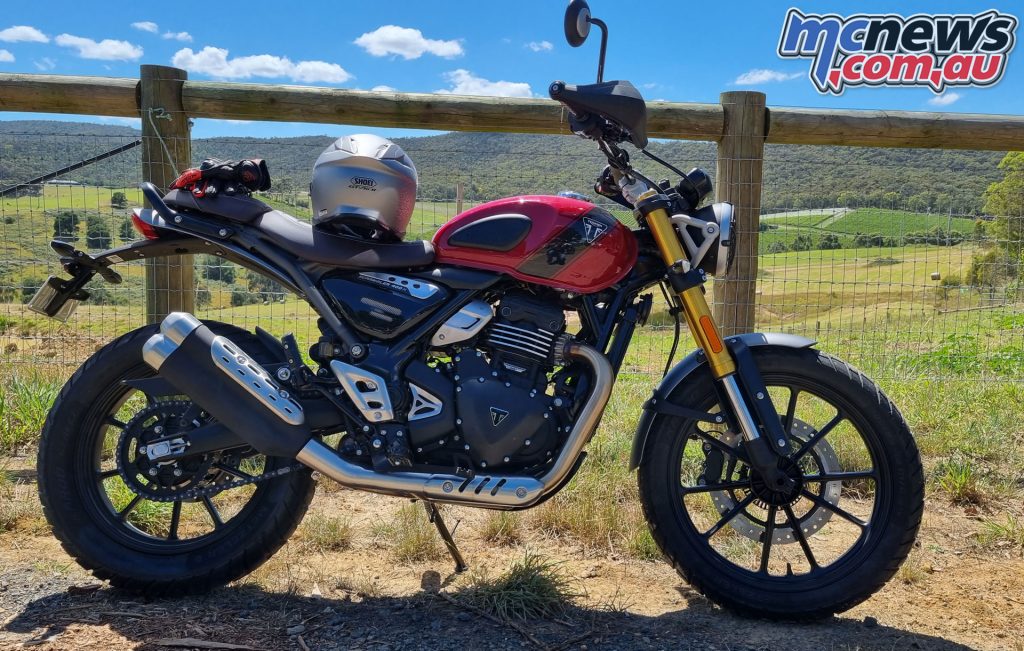
Obviously, the world revolves around Australia, but taking a more international view, apart from giving us new LAMS options, these new 400s are built in India, giving Triumph access to a staggeringly big motorcycling market that is right up their alley. They also offer an option that’s viable for more mainstream Asian markets, which are also more orientated around smaller capacity machines, where the Speed and the Scrambler X will be seen as both powerful and premium.
So two huge potential growth areas for Triumph, with their Z-Series, or MX bikes also on the near horizon, further extending their line-up. Exciting times indeed for the British marque and their diehard fans.
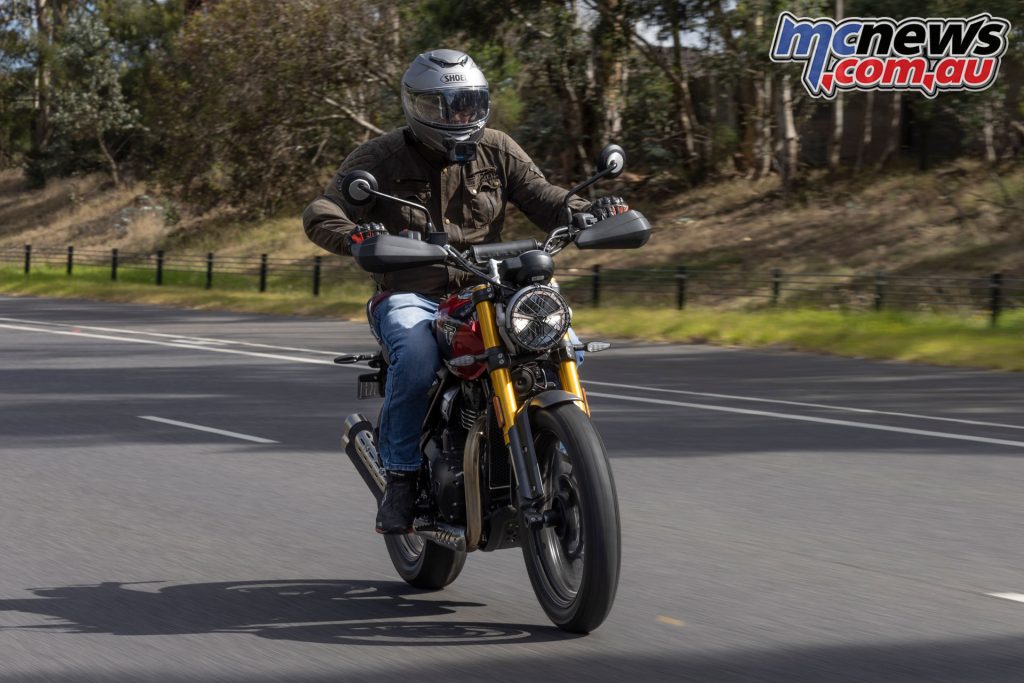
I’m not going to waste time regurgitating the entire spec-sheet, let’s get straight to first impression of the Scrambler 400 X, and even more importantly, how the dirtier of the two models rides.
Jumping on board the Scrambler 400 X I was somewhat taken back, this did not feel like a little 400, it felt more like a 500 or even a 650. That tall front end and raised ‘bars had me thinking a hint of tourer, complete with dual-purpose tyres. I think it’s just the comfort and roomy-ness that give that vibe…
That seat was tall, well-padded, and comfortable, and the reach to the bars felt natural. While the reach to the ground was a small stretch, it was definitely manageable with a 32-inch inseam.
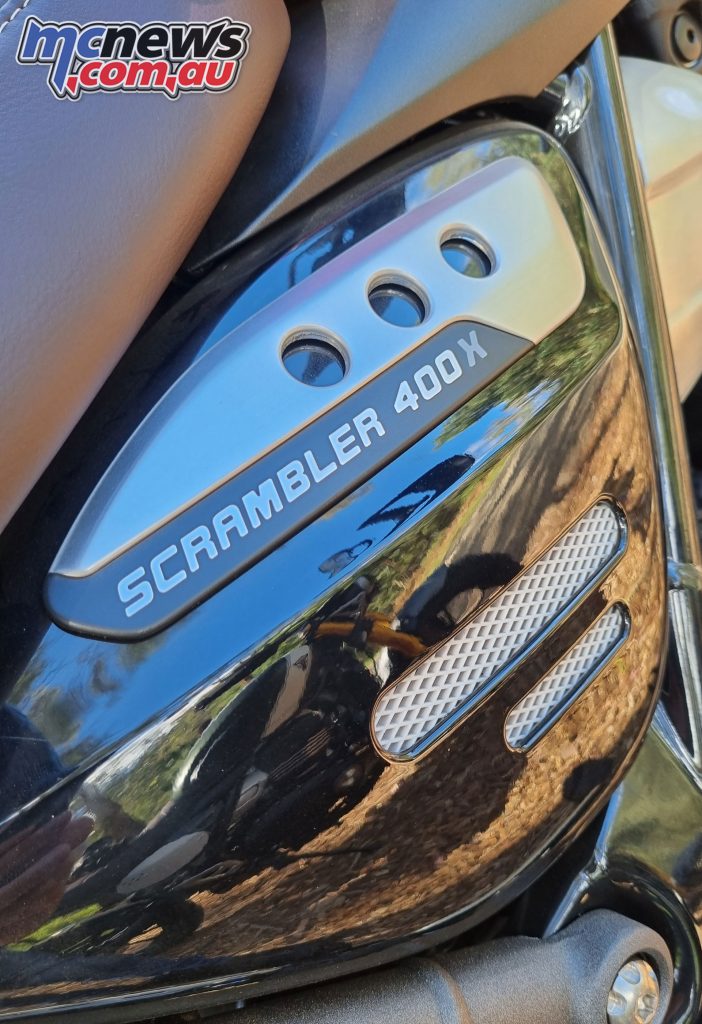
Heading out of Melbourne, I did feel the tread moving around on the Karoo rubber for a couple of blocks at first but soon grew accustomed to it, while everything quickly came together into a confidence-inspiring package.
That’s centred around the new 400 TR-Series engine platform, which ensures the bike pulls away smoothly from a standstill, with willing low-end torque that won’t scare new riders or make the daily commute a chore. A particularly light clutch thanks to slip-assist hardware, adds to the user friendly nature, with predictable fuelling from the RbW system. Rumbling to life the little single even hinted at that Triumph character, keeping in mind the engine is essentially one-third of a Speed Triple 1200 donk.
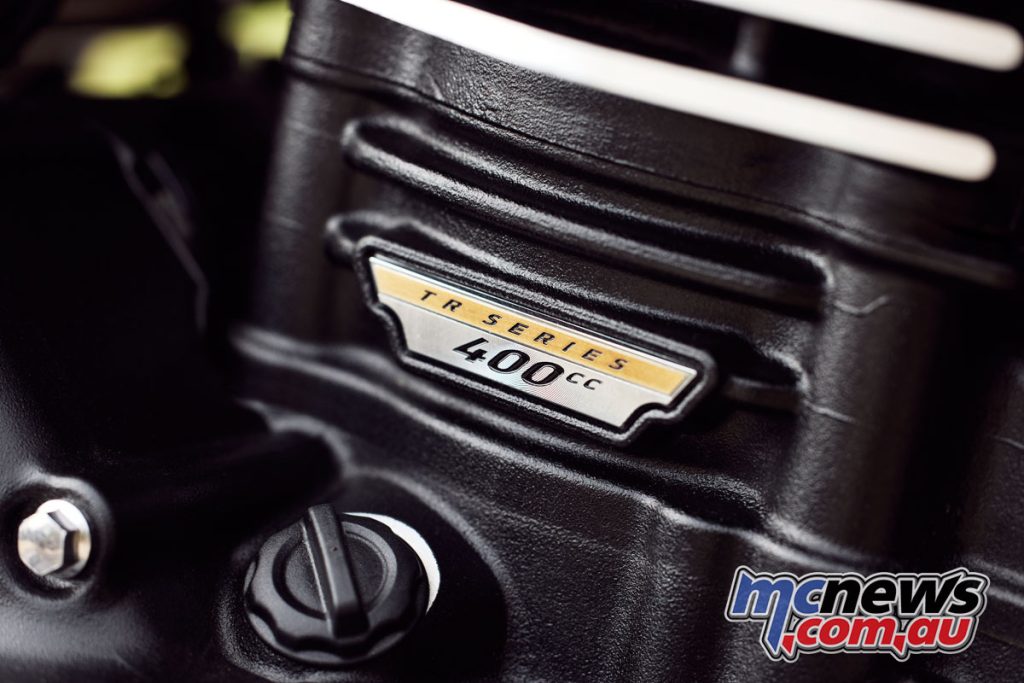
Likewise, the slightly longer travel suspension found on the Scrambler 400 X seemed ideally suited to traversing the suburbs, swallowing up uneven surfaces with aplomb and showing no tendency to dive or wallow in these fairly staid conditions.
There’s good pep there from the 400, with what seemed like fairly non-descript brakes initially, despite a Bybre four-pot front caliper on the larger 310 mm rotor. More on that later, however. The rear does offer good power in these conditions though, with good response from a little pressure at the pedal, enough to more heavily use the rear in urban conditions for the day to day manoeuvring.
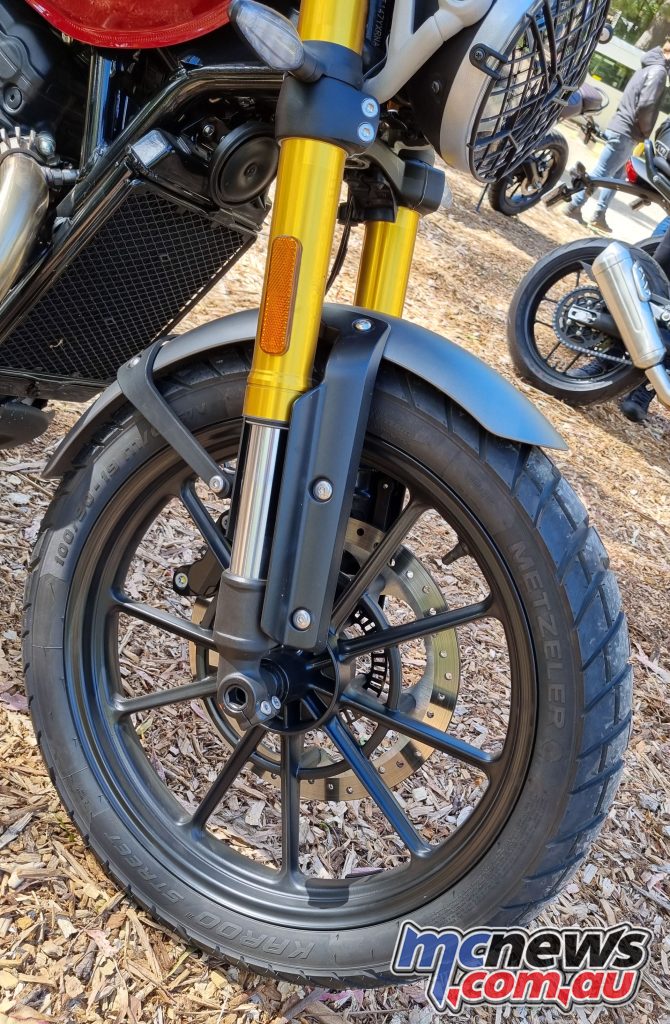
That taller front end also keeps steering light, responsive and quite deliberate, particularly at low speeds, like zipping through traffic, with the traditional mirrors minimising any worries with filtering. That does have the potential to cause some front-end wander at very low speeds if you’re truly crawling, but with a 19-inch front and longer suspension travel, some things have to give, but I’m really looking for things to complain about with that one.
Overall, it was a strong little performer for commuting conditions, which soon turned into a stint on the highway, sitting comfortably at around 100 km/h with plenty left in the tank.
Sure, there’s no wind protection as standard, and you’ll need to go to the accessory range for a screen, but still being fresh on the bike at the start of the day, I honestly couldn’t complain, backing up that original feeling of a hint of touring character to the Scrambler 400 X.
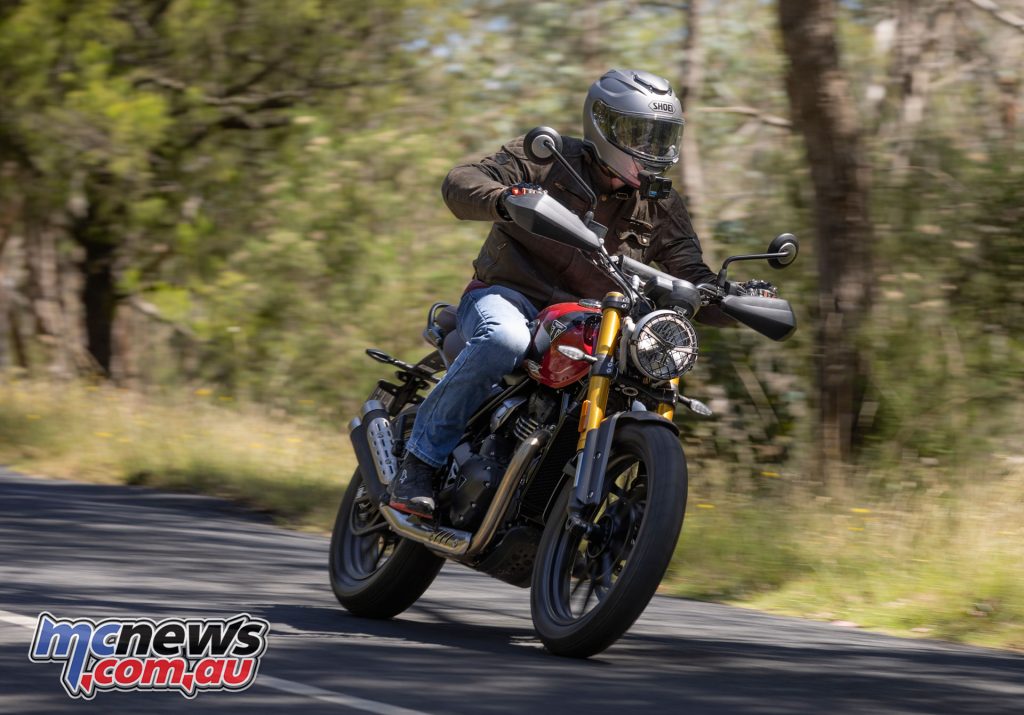
Reaching better, I mean more interesting roads, gives the Scrambler more opportunity to shine, with the powerplant offering somewhat of a powerband, around that 6000-8000 rpm range, where you’re hitting peak torque and really in the meat of it.
Triumph have excelled in balancing the low-end, easy-going nature of the quite restrained retro options with the much more sporty prowess we expect in the 400 cc category, as single revs remain surprisingly smooth. Remember that this is a single, not a twin.
Torque does drop off past 8000 rpm, and for maximum performance you’ll want to keep the engine in that sweet spot of the rev range. But it is easy to enjoy the Scrambler at a more sedate pace.
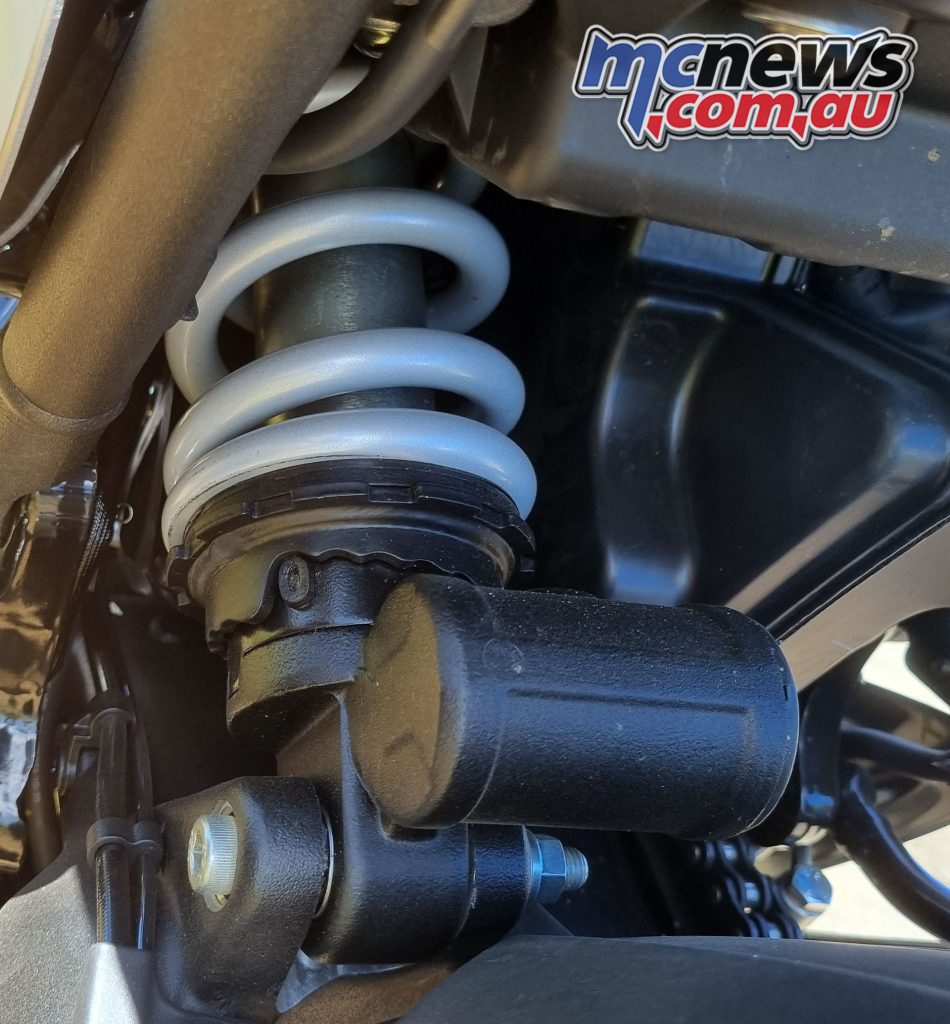
Running along backroads, the suspension remains taut, for me at 75 kg at least, although that taller front end does slow turn in, and the bike demands a bit more commitment through the corners, carrying your speed through.
Surprisingly I didn’t find trailing the front brake into corners made a significant difference here, which may have come down to not getting enough weight over the front wheel, with the Scrambler a little more rear orientated on the balance front. On the bright side, though, the forks had no tendency to dive, and that rear shock was well sorted, offering good comfort.
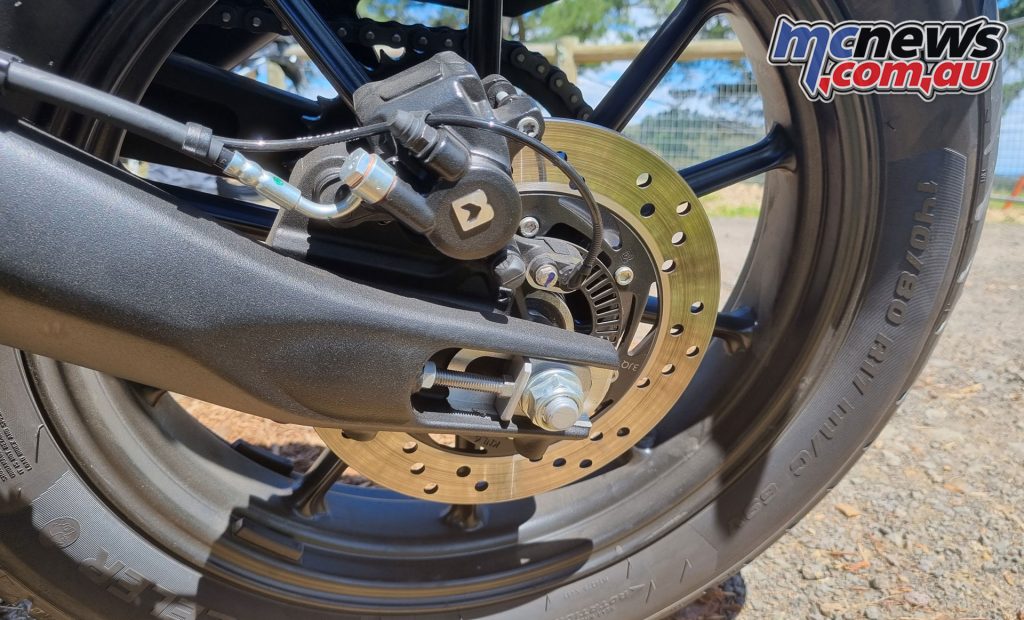
Where the Scrambler 400 X was confidence-inspiring on city and highway, it was a little less forgiving on some of the drastically off-camber corners and tighter unfamiliar roads. While shedding a bit of speed mid-corner was easy enough to do if you ran in a little too hot. That will help new riders on the feedback front, but it was quite a stark contrast to the Speed 400.
Pulling the bike up more aggressively did, however, give me an opportunity to properly test out the brakes, which went from good to excellent in my mind very quickly. That forgiving initial braking performance transforms into impressive stopping power with a bit more lever input, which is both ideal for new riders and ensures great controllability. That’s what I expect from a Bybre four-pot. It’s the bar in the segment, after all.
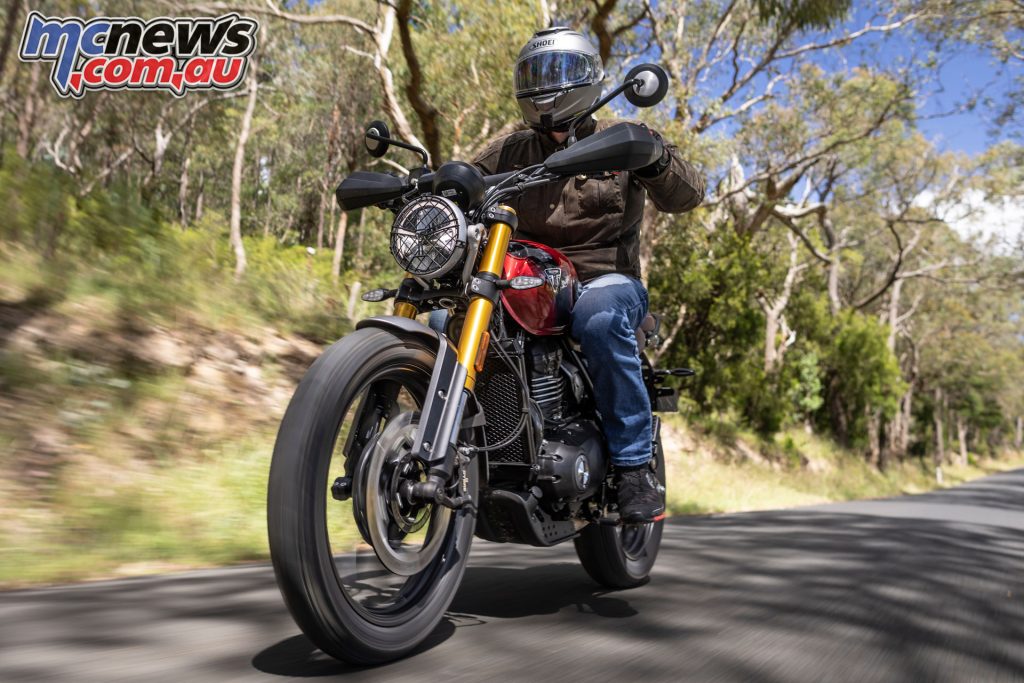
With a packed schedule for the day and two bikes to test – not just one – we didn’t get an opportunity to test out the Scrambler 400 X off-road, although taking off in some grass at the side of the road while using the corner-man system for navigation revealed good stability even with the rear squirming a little in the low traction conditions. I’d expected noticeable traction control intervention there, but I certainly didn’t notice it. Maybe there’s just a bit of a slip built in.
That said, I’d hazard a guess most of these bikes will see minimal light dirt or gravel use only, which I think is far more realistic, with Triumph offering their bigger Scrambler models or the Tigers for those who wish to take things further later on.
Overall, the Scrambler 400 X impresses, not just for the ride, but also with the finish quality, which is typically Triumph and looks the business. Very premium, particularly in this category, where finish quality is often sacrificed to maintain price.
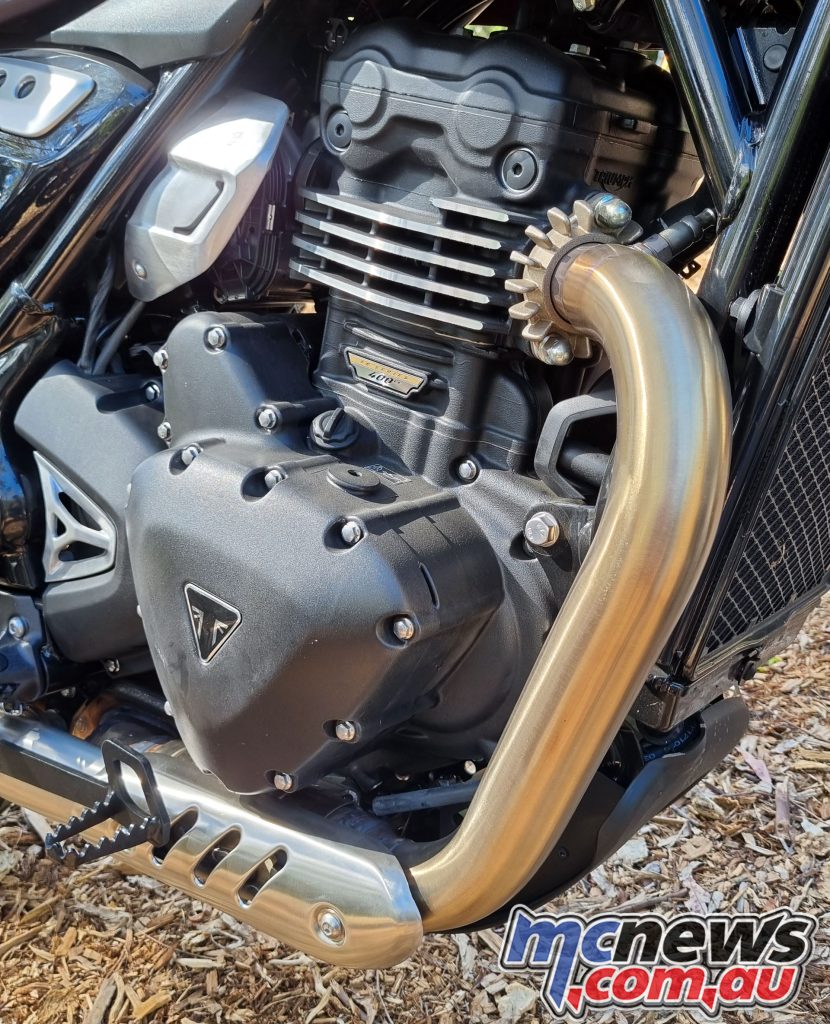
The Scrambler 400 X arrives at $9990 ride-away, which seems more aligned with something like the KTM 390 Adventure, than the Svartpilen 401, which is one of the few comparable competitors, realistically speaking, for this bike.
We could compare it to the Royal Enfield 350s, but there’s such a gap in performance and specification that it’s hard to do so with a straight face. Personally, I wouldn’t even put them in the same category, but I guess if you’re not sure whether you want performance AND style or just style, there could be some overlap there.
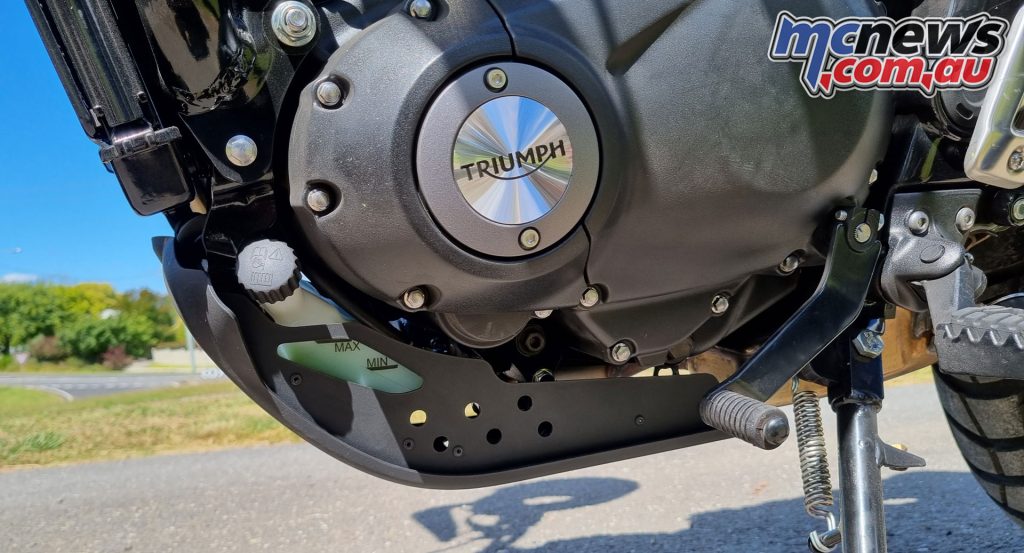
The Scrambler also offers a host of little extras, like the sump guard, handlebar pad, radiator guard, plastic hand guards that will help in winter but probably not in a drop or crash and rubber-clad ‘pegs.
My one real gripe is the dash, which incorporates a USB-C charging point, but is a strange layout to my mind. There’s an analogue speedometer with a digital multifunction dash, including a fuel gauge, tachometer, trip and clock.
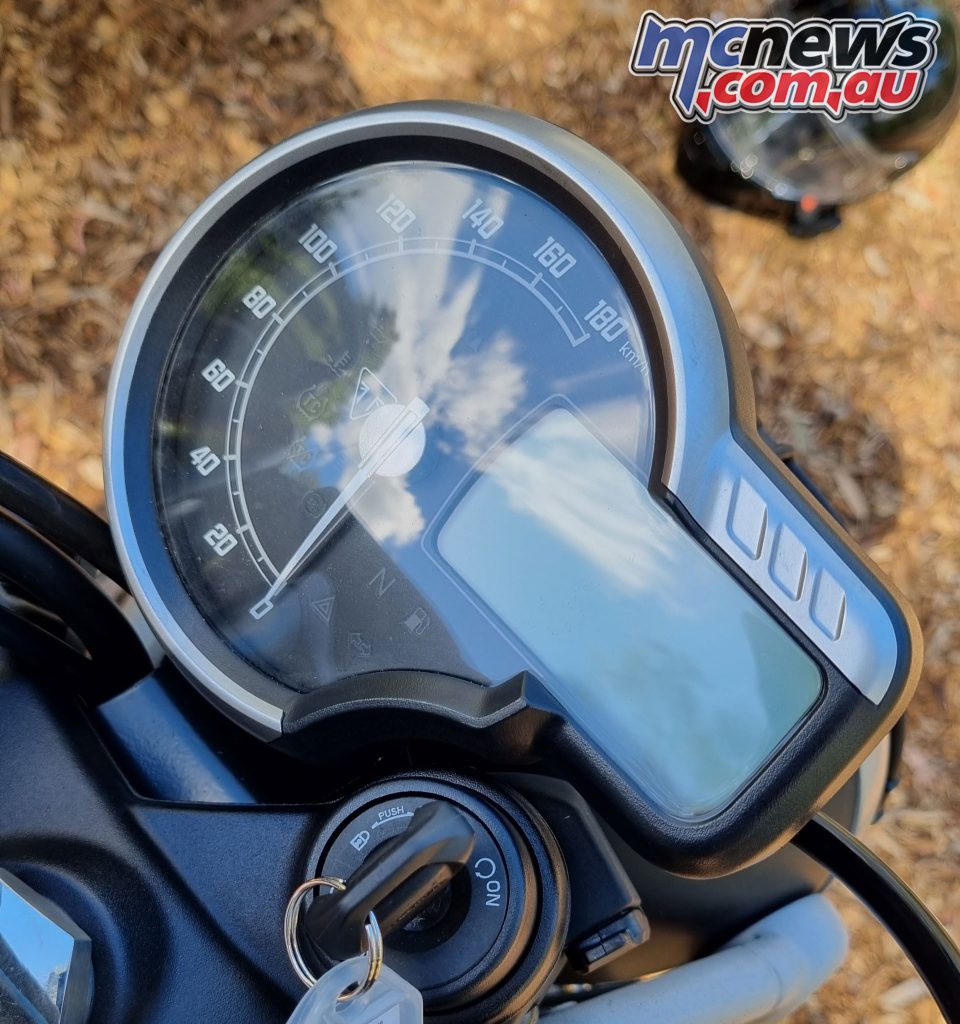
It would make significantly more sense for the analogue clock to be the tachometer, with the speed displayed prominently on the dash. That tiny tachometer is hard to read, and the gear shift indicator makes the whole bar flash, taking it from hard (or impossible) to read. So you can work on feel, or hitting the limiter. I did also notice reflection off the digital readout became an issue when the sun was at just the right angle, reflecting directly into my eyes.
That’s a small criticism, however, of an exceptionally good motorcycle, particularly as Triumph’s first go at this segment. While a little on the tall side seat-wise, the Scrambler 400 X is an ideal entry point into riding, combining an inviting and forgiving package that can be ridden harder for plenty of thrills, with the added bonus of a bit of extra cred when it comes to exploring. Perfect for those who are considering an adventure bike down the track.
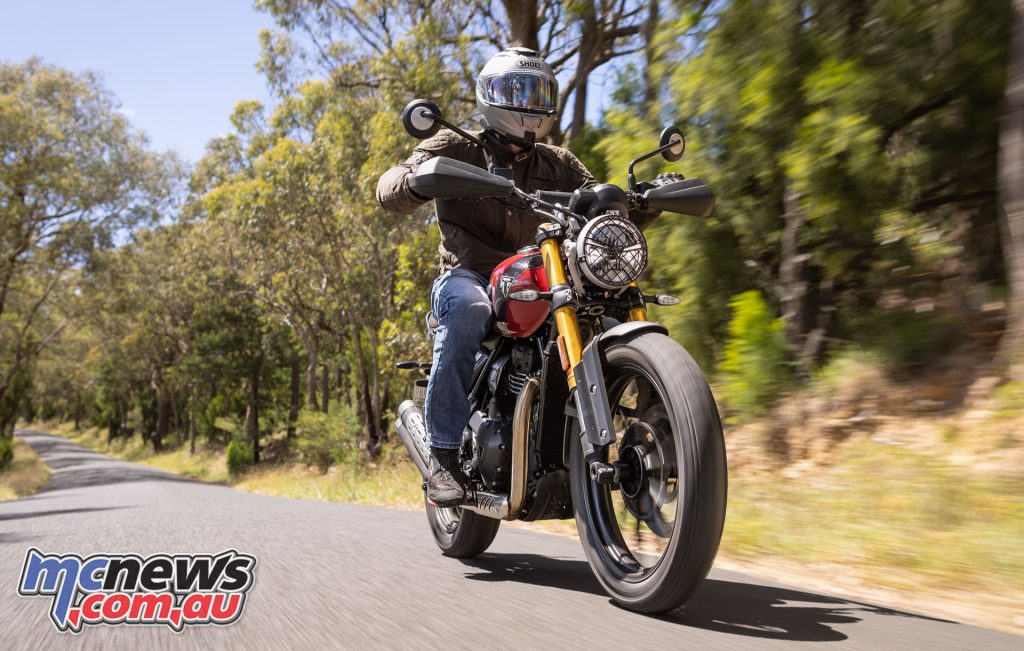
With all this said… it was the Speed 400 that blew my expectations out of the water, and while it perhaps benefited from the better half of the test loop there, it was this bike that captured my imagination.
The full run down on the Speed 400 is here, as I’d say the two bikes warrant their own entries, as I didn’t come away feeling they were just slightly tweaked versions of each other. They truly earn their respective Speed and Scrambler monikers.
For more info head to the Triumph Motorcycles Australia website or your local Triumph dealer.
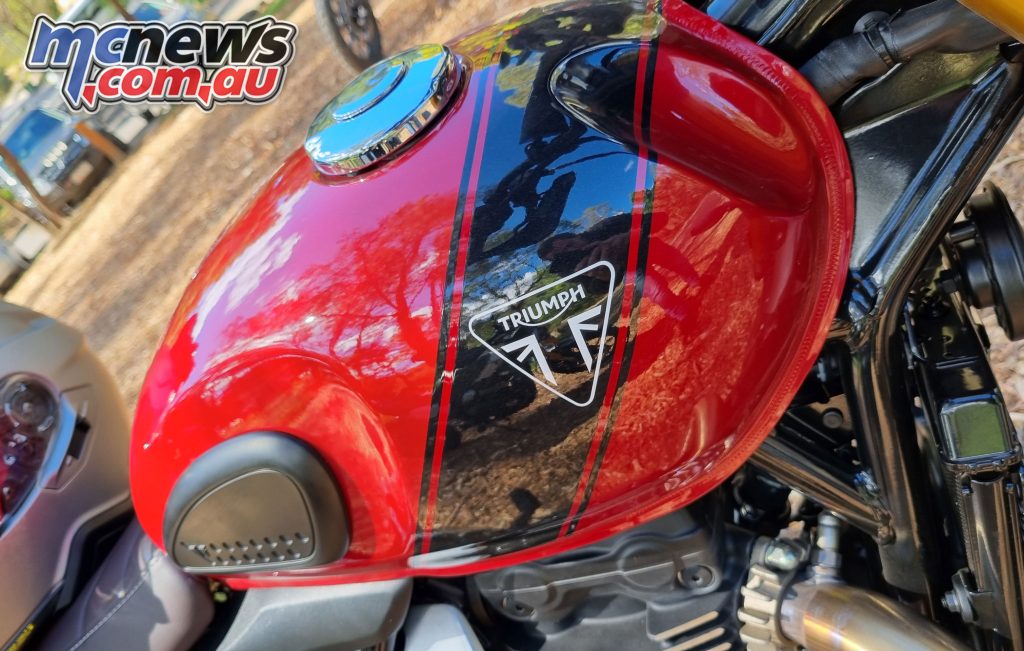
2024 Triumph Scrambler 400 X Specifications
| 2024 Triumph Scrambler 400 X Specifications | |
| Engine | Liquid-cooled, 4 valve, DOHC, single-cylinder |
| Capacity | 398.15 cc |
| Bore | 89.0 mm |
| Stroke | 64.0 mm |
| Compression | 12:1 |
| Maximum Power | 40 PS / 39.5 bhp (29.4 kW) @ 8,000 rpm |
| Maximum Torque | 37.5 Nm @ 6,500 rpm |
| Fuel System | Bosch electronic fuel injection with electronic throttle control |
| Exhaust | Stainless twin-skin header system with stainless steel silencer |
| Final Drive | X-ring chain |
| Clutch | Wet, multi-plate, slip & assist |
| Gearbox | 6-speed |
| Frame | Hybrid spine/perimeter, tubular steel, bolt-on rear subframe |
| Swingarm | Twin-sided, cast aluminium alloy |
| Front Wheel | Cast aluminium alloy 10 spoke, 19 x 2.5 in |
| Rear Wheel | Cast aluminium alloy 10 spoke, 17 x 3.5 in |
| Tyres | Metzeler Karoo Street |
| Front Tyre Size | 100/90 R19 |
| Rear Tyre Size | 140/80 R17 |
| Front Suspension | 43mm upside down Big Piston forks. 150mm wheel travel |
| Rear Suspension | Gas monoshock RSU with external reservoir and pre-load adjustment. 150mm wheel travel |
| Front Brakes | 320mm fixed disc, four-piston radial caliper, ABS |
| Rear Brakes | 230mm fixed disc, floating caliper, ABS |
| Instruments | Analogue speedometer with integrated multi-function LCD screen |
| Length | 2117 mm |
| Width (Handlebars) | 825 mm |
| Height (Without Mirrors) | 1190 mm |
| Seat Height | 835 mm |
| Wheelbase | 1418 mm |
| Rake | 23.2° |
| Trail | 108 mm |
| Wet Weight* | 179 kg |
| Fuel Tank Capacity | 13 litres |










